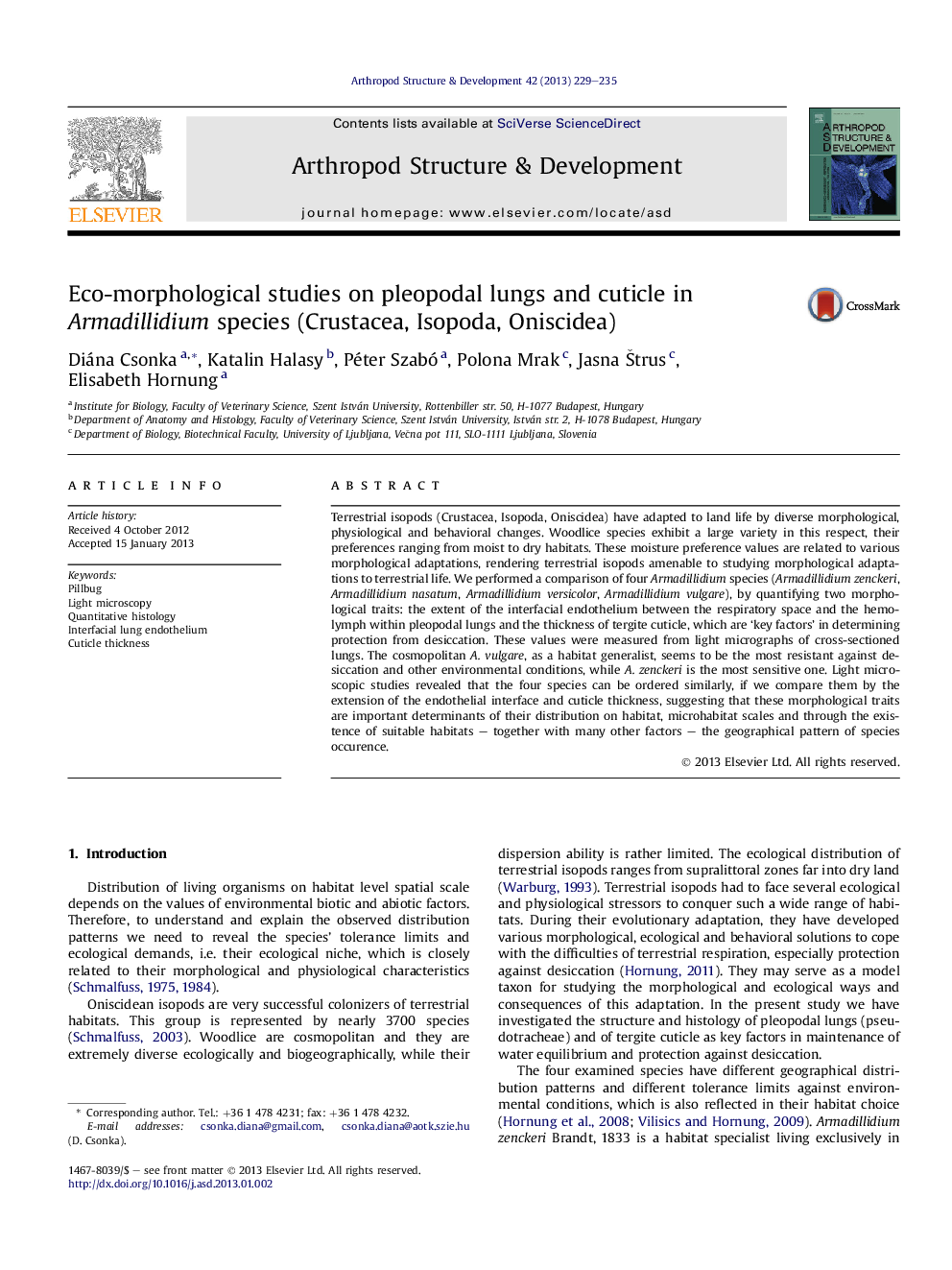| Article ID | Journal | Published Year | Pages | File Type |
|---|---|---|---|---|
| 2778748 | Arthropod Structure & Development | 2013 | 7 Pages |
Terrestrial isopods (Crustacea, Isopoda, Oniscidea) have adapted to land life by diverse morphological, physiological and behavioral changes. Woodlice species exhibit a large variety in this respect, their preferences ranging from moist to dry habitats. These moisture preference values are related to various morphological adaptations, rendering terrestrial isopods amenable to studying morphological adaptations to terrestrial life. We performed a comparison of four Armadillidium species (Armadillidium zenckeri, Armadillidium nasatum, Armadillidium versicolor, Armadillidium vulgare), by quantifying two morphological traits: the extent of the interfacial endothelium between the respiratory space and the hemolymph within pleopodal lungs and the thickness of tergite cuticle, which are ‘key factors’ in determining protection from desiccation. These values were measured from light micrographs of cross-sectioned lungs. The cosmopolitan A. vulgare, as a habitat generalist, seems to be the most resistant against desiccation and other environmental conditions, while A. zenckeri is the most sensitive one. Light microscopic studies revealed that the four species can be ordered similarly, if we compare them by the extension of the endothelial interface and cuticle thickness, suggesting that these morphological traits are important determinants of their distribution on habitat, microhabitat scales and through the existence of suitable habitats – together with many other factors – the geographical pattern of species occurence.
► We studied the structure of four Armadillidium species' pleopodal lung and cuticle. ► The species have different tolerance limits against environmental conditions. ► The habitat requirements are reflected in the species' investigated characters.
